#franciscana
Explore tagged Tumblr posts
Text


2 notes
·
View notes
Text
Capilla Franciscana del siglo XVI
Capilla Franciscana del siglo XVI #aperturaintelectual #fotoaintelectual #RaymundoDHernandez #foto #capilla #Ecatepec #franciscana Raymundo D. Hernández Reyes
Por: Raymundo D. Hernández Reyes La #fotoaintelectual de esta semana es de una pequeña pero sofisticada Capilla Franciscana del Siglo XVI que se encuentra en el municipio de Ecatepec y forma parte del casco de la Hacienda donde fue fusilado José María Morelos y Pavón.#RaymundoDHernandez#foto#capilla#Ecatepec#franciscanaLas oportunidades que he tenido para ir a este lugar se han dado en los…
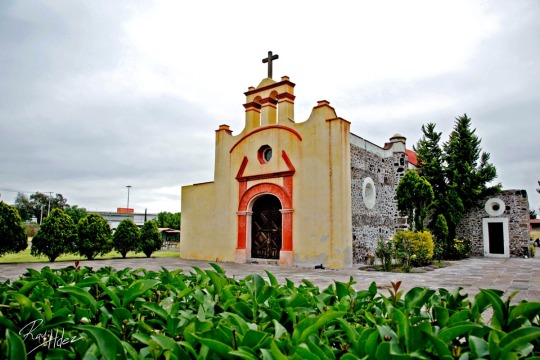
View On WordPress
#AperturaIntelectual#capilla#Ecatepec#Foto#FotoAIntelectual#franciscana#RaymundoDHernandez#Raymundo D. Hernández Reyes#RDHR
2 notes
·
View notes
Text
Another one and my personal favorite: the franciscana (Pontoporia blainvillei)

It lives in the coasts of Brasil, Argentina, and Uruguay, mostly in the Río de la Plata estuary. It’s the only species of river dolphin that lives in salt water. It also has the biggest beak to body ratio of any cetacean.

look at that beauty!
I think it's sad that most people always think of bottlenoses as the "classic dolphin" since its the one that's always used for shows, and always think of dolphins as just straight grey when in reality there's so many varieties with so many different amazing patterns


Look at the common dolphin! They have a gorgeous X pattern and even some dull yellow/gold!!
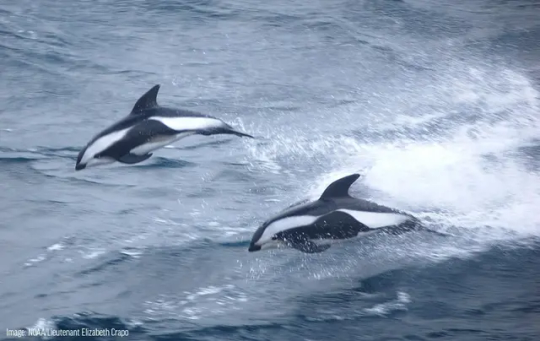
Hourglass dolphins have gorgeous white streaks


Spinner dolphins have really pretty banding as well, AND they have a really sleek cute silhouette!

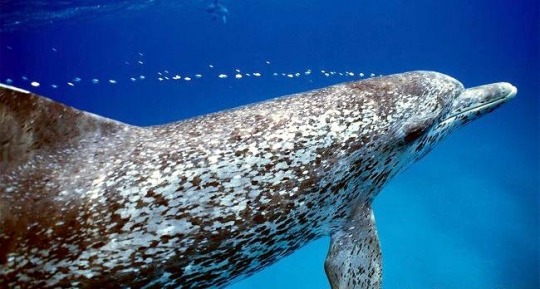
The atlantic spotted dolphin!!! Theyre spotted!!!!!!

and the pantropical spotted too!!


Dusky dolphins have a gorgeous airbrush look going on like straight out of a 2000s fantasy illustration

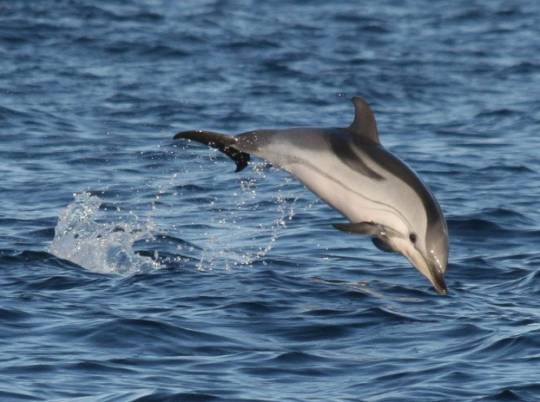
Striped dolphins sure have stripes!! How cool!!
And these I've shown you aren't even all of them at all, there are so many of them:
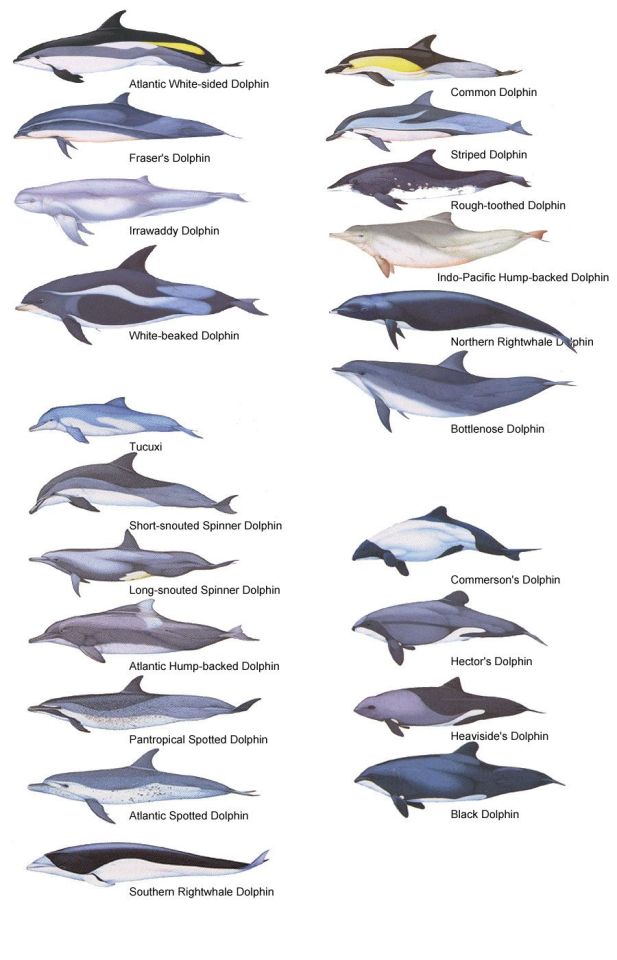
There's so so so many different types of dolphins people dont know about this isnt even all of them and some are SO gorgeous and underrated because people just dont know they exist so I'm here to fix that
21K notes
·
View notes
Text

«También una proposición no está sino en la mente o en la palabra o en lo escrito; entonces sus partes no están sino en la mente o en la palabra o en lo escrito; pero las sustancias particulares no son de este estilo. Resulta entonces que ninguna proposición puede componerse de sustancias. Pero la proposición se compone de universales, entonces los universales no son sustancias en modo alguno.»
Guillermo de Ockham: Suma de lógica. Grupo Editorial Norma, pág. 70. Santafé de Bogotá, 1994.
TGO
@bocadosdefilosofia
@dias-de-la-ira-1
#ockham#guillermo de ockham#guillermo de occam#william of ockham#suma de lógica#proposición#proposiciones#substancia#substancias#sustancia#sustancias#universal#universales#problema de los universales#nominalismo#lógica#orden franciscana#edad media#teo gómez otero
6 notes
·
View notes
Text
Esta es la procesión que todavía tiene turnos en la Quinta Semana de Cuaresma 2023
¡Todavía puedes cargar esta Quinta Semana de Cuaresma!
Si todavía estás buscando cargar en esta quinta semana de cuaresma 2023, te queremos contar que hay una Iglesia que aún cuenta con turnos tanto para cucuruchos como devotas. Y es que la quinta semana de cuaresma es para muchas personas el culmen de una jornada cuaresmal donde participamos en muchas procesiones, cargamos y vivimos anécdotas que jamás vamos a olvidar. Como en toda manifestación…

View On WordPress
#cristo de la preciosa sangre#Cuaresma#Cucurucho#dolorosa franciscana#Guatemala#iglesia de san francisco#procesion#procesion del cristo de la preciosisima sangre#recorrido procesiones en guatemala
2 notes
·
View notes
Text
Brasiliense?!?
profjulioneto. Reel – Facebook O sufixo eiro em “Brasileiro” como formador de gentílicos, palavras que indicam procedência ou naturalidade, parece se dever ao fato de que a palavra, ao nascer, designava uma profissão e não uma origem, os naturais do Brasil seriam conhecidos como brasilianos, brasilenses ou mesmo brasileses. Sérgio Rodrigues – Veja. 30 abr 2013 Se prevalecessem as regras…
View On WordPress
#1500 1760 período áureo capitalismo manufaturas#1880 período livre concorrência minérios#açúcar sugar#Arnaldo Rodrigues Menecozi Instituto Histórico e Geográfico de Mato Grosso do Sul (IHGMS)# adjetivo profissão tirador de pau-brasil# pau-de-tinta Brazil#Bernardino de Souza qualificativo dos filhos do Brasil#brasilianos brasilenses brasileses Sérgio Rodrigues Veja#brasiliense brasileira#economia colonial#escravidão#filólogo Silveira Bueno#formador gentílicos#gold ouro pedras preciosas#História da Custódia Franciscana do Brasil franciscano Frei Vicente do Salvador#homens criminosos banidos#nacionalidade Brazilians#nativos brasiliensis#naturais do Brasil#Portugal#primeiro#procedência naturalidade#profissão#regras gramaticais língua portuguesa#Sérgio Rodrigues profjulioneto Reel Facebook#significado pejorativo#subciclo pecuária Nordeste#sufixo eiro Brasileiro#Tempo colonial
0 notes
Text
0 notes
Text
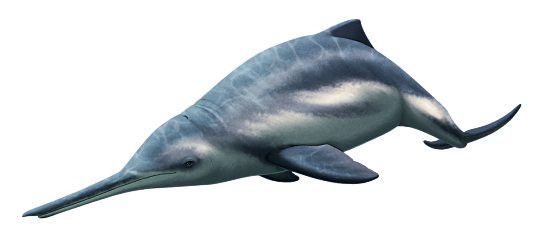
Romaleodelphis pollerspoecki was a dolphin-like toothed whale related to the ancestors of both modern oceanic dolphins and beaked whales, living in coastal waters covering what is now Austria during the early Miocene about 22 million years ago.
Although only known from a single fossil skull, this cetacean was probably around 3m long (~9'10"). It had a long snout lined with over 100 small pointed uniformly-shaped teeth, and the bony walls of its inner ears were well-preserved enough to show that it was able to hear narrow-band high frequency sounds – a specific form of echolocation that has convergently evolved multiple times in various modern and extinct toothed whale lineages.
Based on the presence of ancient river-mouth deposits in the area where Romaleodelphis was found, it may potentially have been capable of traversing between marine, brackish, and freshwater environments similar to the modern franciscana.
———
NixIllustration.com | Tumblr | Patreon
References:
Bavarian State Collections of Natural History. "'Astonishing Results' – Scientists Reveal Secrets of Mysterious 22-Million-Year-Old Dolphin Skull." SciTechDaily, 15 Nov. 2024, https://scitechdaily.com/astonishing-results-scientists-reveal-secrets-of-mysterious-22-million-year-old-dolphin-skull/
Sanchez-Posada, Catalina, et al. "Romaleodelphis pollerspoecki, gen. et sp. nov., an archaic dolphin from the Central Paratethys (Early Miocene, Austria)." Journal of Vertebrate Paleontology (2024): e2401503. https://doi.org/10.1080/02724634.2024.2401503
Wikipedia contributors. “Romaleodelphis” Wikipedia, 06 Nov. 2024, https://en.wikipedia.org/wiki/Romaleodelphis
#science illustration#paleontology#paleoart#palaeoblr#romaleodelphis#odontoceti#toothed whale#cetacean#whale#artiodactyla#ungulate#mammal#art#marine mammals
368 notes
·
View notes
Text

Roman Loranc - Iglesia Franciscana, Vilnius
96 notes
·
View notes
Text
Genetic/cybernetic mods of the Biopunks
This only covers personal mods of course, since artificial inmune systems are ubiqutous (and actually every resident of the Argentine Confederation has to update them yearly or else you'll get a visit from the genedarmes)
Marcos: Biological tattoo on his forearm that allows him to "taste" certain protein sequences, over time he has developed an intuitive sense of them. It's connected to a computing system that processes biological data and also has a USB (or equivalent rather) port that can be used for bioengeering or to play music. Enhanced eyes that see in the low infrarred and ultraviolet. Also, hair that glows blue in the dark.
Florencia: Spots in her hair to host flowers and other plants. Ability to digest cellulose and to generate animal-based nutrients and vitamins. Possibly a THC production implant, who knows.
Ariel: Encrypted personal computer in his forearm, never talks about it. One of his fingers is a multitool and he loves making you guess which one.
Melanie: Implanted cat ears and tail, fully functional (though her brain shifted a bit to learn how to control the tail). Purple eyes with cat-like iris and night vision. Her fangs are natural though.
Marina: None so far! Still not wholly sold in the idea.
Pancho: Literally an uplifited cyborg Franciscana dolphin, with a mechsuit to walk on land and communicate (by mech don't be fooled, he's about the size of a big dog)
#cosas mias#I think I might add more depending on the characters and the setting#very few of the available genemods touch the brain because that tends to have nasty consequences#soft biopunk
42 notes
·
View notes
Text

La Lluvia
La lluvia tiene un vago secreto de ternura, algo de somnolencia resignada y amable, una música humilde se despierta con ella que hace vibrar el alma dormida del paisaje.
Es un besar azul que recibe la Tierra, el mito primitivo que vuelve a realizarse. El contacto ya frío de cielo y tierra viejos con una mansedumbre de atardecer constante.
Es la aurora del fruto. La que nos trae las flores y nos unge de espíritu santo de los mares. La que derrama vida sobre las sementeras y en el alma tristeza de lo que no se sabe.
La nostalgia terrible de una vida perdida, el fatal sentimiento de haber nacido tarde, o la ilusión inquieta de un mañana imposible con la inquietud cercana del color de la carne.
El amor se despierta en el gris de su ritmo, nuestro cielo interior tiene un triunfo de sangre, pero nuestro optimismo se convierte en tristeza al contemplar las gotas muertas en los cristales.
Y son las gotas: ojos de infinito que miran al infinito blanco que les sirvió de madre.
Cada gota de lluvia tiembla en el cristal turbio y le dejan divinas heridas de diamante. Son poetas del agua que han visto y que meditan lo que la muchedumbre de los ríos no sabe.
¡Oh lluvia silenciosa, sin tormentas ni vientos, lluvia mansa y serena de esquila y luz suave, lluvia buena y pacifica que eres la verdadera, la que llorosa y triste sobre las cosas caes!
¡Oh lluvia franciscana que llevas a tus gotas almas de fuentes claras y humildes manantiales! Cuando sobre los campos desciendes lentamente las rosas de mi pecho con tus sonidos abres.
El canto primitivo que dices al silencio y la historia sonora que cuentas al ramaje los comenta llorando mi corazón desierto en un negro y profundo pentágrama sin clave.
Mi alma tiene tristeza de la lluvia serena, tristeza resignada de cosa irrealizable, tengo en el horizonte un lucero encendido y el corazón me impide que corra a contemplarte.
-Federico García Lorca
#federico garcia lorca#mevuelveslorca#frases#pensamientos#escritos#fragmentos#literatura#escritores#libros#literatura universal#poesia#poemas
13 notes
·
View notes
Text


0 notes
Text
By: Colin Wright
Published: Dec 2, 2024
In the annals of academic absurdity, there are moments that make even seasoned critics pause in awe. “Loving the Brine Shrimp: Exploring Queer Feminist Blue Posthumanities to Reimagine the ‘America’s Dead Sea’” is one such moment. This is not a parody—though it reads like one—but a “serious” paper, or so the author insists. In what is best described as a surrealist love letter to brine shrimp, the author, Ewelina Jarosz (she/they), wades through a soup of critical theory, environmental activism, and performance art, asking the reader to reconsider their relationship with brine shrimp—not as mere crustaceans but as symbols of queer resilience, ecological ethics, and, somehow, hydrosexual love.
This paper is part of a growing tradition of postmodern scholarship that prioritizes ideological signaling over intellectual rigor. Following in the footsteps of infamous works like the 2016 “Feminist Glaciology” paper—which posited that glaciers are gendered—“Loving the Brine Shrimp” sets a new standard for academic ridiculousness. Its culmination in a cyber wedding to augmented reality brine shrimp makes feminist glaciers seem like a grounded scientific pursuit by comparison. But before we arrive at the nuptial climax, let’s examine how this spectacle unfolds.
Love at First Shrimp
The article begins innocuously enough, discussing the ecological crisis facing Utah’s Great Salt Lake. However, it doesn’t take long before it veers into woke lunacy with concepts like “hydrosexuality,” which refers to a “more-than-human sensuality and sexuality emphasizing fluidity and relationality” that “offers a cultural understanding of water as a non-binary substance connecting all bodies of water on the planetary scale.” Hydrosexuality, she argues, challenges the “hegemonic notion of the autonomous and bounded human subject” by embracing “watery thinking.”
If you’re struggling to imagine what any of this means, join the club. The author’s language is a masterclass in obfuscation, using terms like “hydrophilic logic” and “multispecies ethics” to mask the fact that she’s anthropomorphizing liquid.
The absurdity intensifies when she links hydrosexuality to the brine shrimp, praising these creatures for their “swirly sexuality” and reproductive versatility. Apparently, the shrimp’s ability to reproduce via live birth or parthenogenesis (which the author incorrectly calls “pathogenesis” throughout the paper) is a triumph over binary thinking, making them paragons of queer resilience that subvert the oppressive structures of settler-colonial science. Yes, really.
Settler Science and Capitalist Cysts
The paper is rife with accusations against “settler science,” a term the author uses to describe any scientific practice associated with Western colonialism. She argues that early studies of the Great Salt Lake objectified its ecosystem, reducing the brine shrimp to mere commodities. Even the shrimp’s Latin name, Artemia franciscana, is critiqued as a tool of imperial domination. Naming a species, she asserts, reflects a “biology of empire” that erases Indigenous ways of knowing. By this logic, taxonomy itself is a colonial plot.
The author also condemns the commercialization of brine shrimp, particularly their use as fish food and their reinvention as the whimsical “Sea-Monkeys” pet marketed to children. This, they say, constitutes “environmental violence,” a term that appears to mean anything they dislike about human interaction with water-based ecosystems.
Drawing from perspectives offered by queer death studies (Radomska et al. 2021, p. 2), the brine shrimp’s ambiguous status and reproductive agentiality, hovering between the “living” and “non-living” in a state scientifically referred to as cryptobiosis, were reinvented for entertainment, concealing environmental violence.
To support their critique, the author invokes “low-trophic theory,” a concept they describe as prioritizing the ethical interdependence of organisms in an ecosystem. While the principle itself might have some use, the author’s application of it veers into parody. She laments the capitalist exploitation of the shrimp’s reproductive system, framing the harvesting of brine shrimp cycts as a form of ecological oppression. This is all delivered in the impenetrable prose of critical theory, with phrases like “queer ethical field studies” and “feminist blue posthumanities” sprinkled heavily throughout.
The Cyber Wedding to the Brine Shrimp
The paper reached peak woke in a section titled “Loving the Brine Shrimp,” which recounts a performance art piece called Cyber Wedding to the Brine Shrimp. This event, staged on the receding shores of the Great Salt Lake, involved artists, scientists, and augmented reality brine shrimp. Participants made vows to the crustaceans, marched in a procession, and capped it off with a communal bath in the lake. The author describes this as “making love to the lake,” a phrase that may haunt frequent swimmers of the Great Salt Lake for the rest of their lives.
The wedding was not merely symbolic; it was, according to the author, an act of environmental advocacy. By expressing love and commitment to the brine shrimp, the participants hoped to challenge capitalist commodification and foster “multispecies solidarity.” The participants even asked the brine shrimp for their consent to marry, which the shrimp apparently gave telepathically to some participants, while the author seemed content in problematically assuming their consent after proclaiming, “I didn’t hear a no.”
The use of augmented reality (AR) technology added another layer of surrealism. Instead of interacting with real brine shrimp, participants directed their vows toward a giant AR projection of the creatures.
The author describes the procession and bath as transformative, blurring the boundaries between human and non-human bodies. For most readers, however, this spectacle is less an example of profound ecological insight and more a testament to the unchecked excesses of woke performance art masquerading as legitimate scholarship.
I am not sure if you’re sufficiently prepared for this, but below I present to you Cyber Wedding to the Brine Shrimp in its entirety, which has been appropriately overlaid with Mystery Science Theater 3000 silhouettes by my good friend Dr. Rollergator.
[ Watch: "Cyber Wedding to the Brine Shrimp" ]
A Crisis of Peer Review
While the paper’s content is laughable, its publication raises serious questions about the state of academic peer review. How did this article, brimming with jargon and palpably absurd, make it through the editorial process? Are journals so desperate to appear progressive that they’ll publish anything cloaked in the language of decolonization and queerness? The answer appears to be “yes.”
However, one thing is certain: the academic community must reckon with the consequences of allowing such work to proliferate. At a time when public trust in science is already dismal, papers like this undermine the credibility of legitimate scholarship. When even the most basic standards of coherence and relevance are abandoned in favor of ideological grandstanding, the credibility of academia itself is at stake.
* * *
As we reflect on the surreal spectacle of Cyber Wedding to the Brine Shrimp and its academic context, one thing becomes clear: we need a term to capture the moment when scholarly work crosses the line from odd to outright ludicrous. I propose “marrying the shrimp” as the academic world’s answer to “jumping the shark.” From now on, this phrase will signify a project so absurd, so detached from reality, that it becomes a parody of itself.
Let’s explore how this term might find its place in academic vernacular:
“Oh Steve? Yeah, he really married the shrimp with his last research project.”
“Yeah Sally, your thesis wasn’t groundbreaking, but at least you didn’t marry the shrimp.”
“That journal used to have standards, but now they’re marrying the shrimp left and right.”
The phrase could also be used preemptively, as a warning to those teetering on the edge: “Careful, Karen. Your proposal on the patriarchal dynamics of Tupperware parties is dangerously close to marrying the shrimp.” Or, as a compliment when someone narrowly avoids absurdity: “I thought your case study on the history of medieval cheese wheels was going to marry the shrimp, but you really pulled it together!”
In an era where intellectual rigor often takes a backseat to performative absurdity, it’s important to keep a sense of humor about the bizarre trajectory of academic publishing. After all, what else can we do when purportedly serious scholars convene weddings for brine shrimp or ascribe nonbinary identities to water?
Alas, these are the times we live in.
--



==
How did we ever let these mentally ill retards gain institutional and societal-wide power?
#Colin Wright#brine shrimp#sea monkeys#hydrosexuality#academic fraud#academic corruption#corruption of education#higher education#queer theory#feminism#feminist theory#defund gender studies#gender studies#religion is a mental illness
11 notes
·
View notes
Text

TÍTULO: Crucifixión con Santa Catalina, San Francisco, San Buenaventura (?) y San Juan AUTOR: Bernardino Giovanni Scotti y Giovan Stefano Scotti FECHA: 1490 - 1495 MATERIAL Y TÉCNICA: Tempera DIMENSIONES: 243x143 cm INVENTARIO: 5511 La pintura data aproximadamente de 1495 y procede de la iglesia franciscana de Sant'Angelo en Milán. A falta de documentos, la atribución a los escotos se realiza sobre una base estilística, gracias a las afinidades encontradas con una pintura de tema similar conservada en Como, en el refectorio del monasterio franciscano de Santa Croce en Boscaglia pintada por Felice Scotti. De hecho, el cliente es el mismo (orden franciscana) y las figuras de los dos ladrones, el grupo de Marías y el santo obispo también son idénticas. Ambas obras están influenciadas por un ambiente cultural en el que convergieron la lección de Mantegna así como las experiencias locales de Bergognone, Zenale y Butinone y en el que se formaron las personalidades de Gaudenzio Ferrari (recordado por Lomazzo entre los alumnos de Stefano Scotti) y Bernardino Luini.
Información e imagen de la web de la Pinacoteca de Brera.
7 notes
·
View notes
Text

Santa Jacinta Marescotti, virgen romana
Compatrona de Viterbo con S. Biagio, S. Jacinta Marescotti fue la caprichosa hija de un príncipe. Sufrió una injusta decepción amorosa y fue recluída por la fuerza en un convento. Allí conoció Cristo, su verdadero esposo y por su amor, cuidó luego con mucha paciencia a los ancianos y a los enfermos.
Santa Jacinta Marescotti, virgen romana
30 enero
Cuando se es hermosa, rica, y además noble de nacimiento, se cree que sea posible obtenerlo todo. Clarice, la hija de los príncipes Marescotti de Vignanello, así lo pensaba: desde joven soñaba con una vida cómoda y un buen matrimonio, pero los planes de felicidad que el Señor tenía para ella tomarían otros rumbos. Clarice estaba segura de que habría podido realizar sus sueños pues había conocido al joven marqués Capizucchi y se había enamorado de él. En cambio, los padres de Clarice habían decidido que la esposa del marqués fuera Ortensia, la hermana menor de Clarice.
Un monasterio al puesto de un marido
La decepción de Clarice fue tan fuerte que decidió no perdonar a sus padres por haber preferido a su hermana y comenzó a hacerles la vida imposible. Para evitar esos problemas, el príncipe, la recluyó por la fuerza en el monasterio de San Bernardino, en Viterbo, donde había estudiado de niña y donde su otra hermana, Ginevra, ya se había convertido en monja. Clarice, por su cuenta, no aceptó la clausura estrecha pero tomó el nombre de Jacinta. Aceptó solo participar a la vida de oración de la comunidad, y por eso se hizo Terciaria franciscana para no someterse al claustro. Como no sentía la vocación a profesar los votos de obediencia y pobreza, profesó solo el voto de castidad. Por eso siguió vistiéndose con ropa fina, viviendo en un apartamento bien arreglado donde muchos amigos venían a visitarla y donde se hacía servir por dos novicias. Era noble y como tal quería seguir viviendo.
De adolescente frustrada a grande santa
A pesar del escándalo causado, Jacinta vivió así durante 15 años. Luego se enfermó gravemente. Y así comprendió su fragilidad. Fue en el sufrimiento de la enfermedad que el Señor la esperaba, paciente. "¡Oh Dios, te lo ruego, dale sentido a mi vida, dame esperanza, dame la salvación!" rezaba. Una vez curada, pidió perdón a las hermanas y se despojó de sus vanidades. Los siguientes 24 años de su vida fueron años de mayores privaciones y de una más intensa dedicación al prójimo, especialmente a los pobres y los enfermos. Gracias a la ayuda económica de sus amigos del pasado, pudo organizar desde el claustro la actividad de dos institutos caritativos: los Sacconi, (llamados así por el sayo que vestían los hermanos durante su servicio), enfermeros que ayudaban a los enfermos, y los Oblatos de María, que ofrecían consuelo a los ancianos y abandonados. Ella misma daba a los pobres todo lo que recibía y su ejemplo acercó a la fe incluso a muchos que antes se habían alejado.
La muerte en olor de santidad
Jacinta murió en 1640 y fue inmediatamente venerada como santa por el pueblo, especialmente por aquellas personas que habían vivido en manera disoluta o mundana, pero que gracias a los ejemplos de Jacinta, habían sido tocados por la gracia de la conversión. Se cuenta que durante sus funerales toda la gente quería llevarse un trozo de su hábito para conservarlo como una reliquia, y por eso sus restos tuvieron que ser revestidos por tres veces. Fue el Papa Pío VII quien la canonizó en 1807.
3 notes
·
View notes
Text

Virgen María con el Niño.
Seguidor de Andrea del Sarto (Florencia, 1486-1530)
Obra italiana de incuestionable calidad artística, valorada en todas las referencias escritas, a pesar de que a lo largo de los años ha sufrido intervenciones y erosiones en su dúctil superficie pictórica, ingresó en el Museo con la desamortización procedente de la iglesia del convento de franciscanas de la Puridad.
4 notes
·
View notes